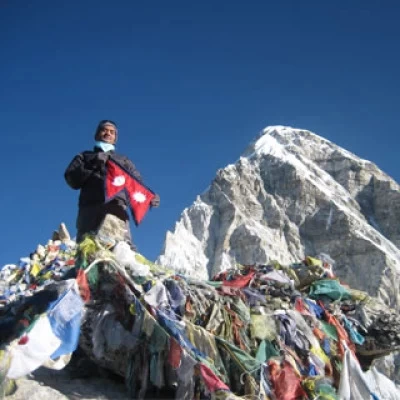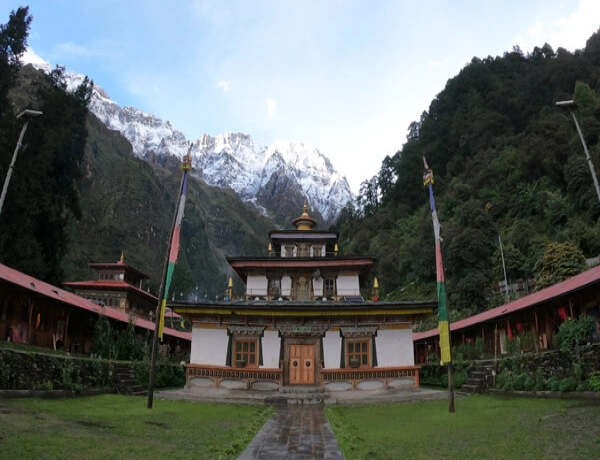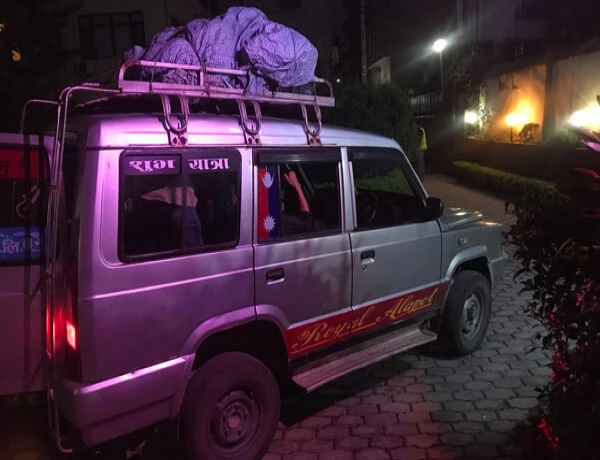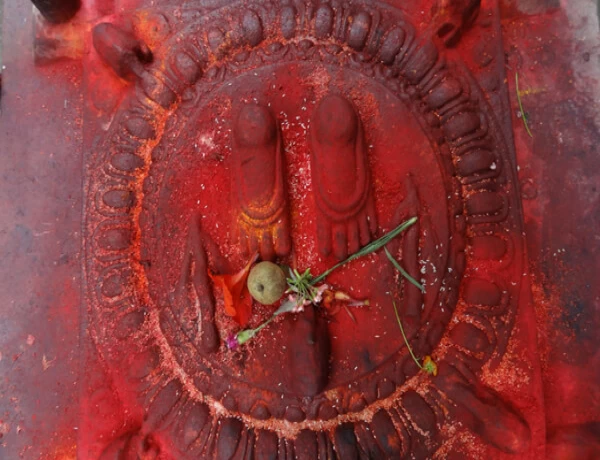How is the Weather in Everest Trek? Tell me the Best Seasons in the Everest Region.
In general, the weather in the Everest region is cold as it lies in the northern part of Nepal. Since the trek starts below 3,000m (Lukla: 2,800m) and goes up to 5,555m (Kalapatthar), the temperature varies widely. Additionally, depending on where and when trekkers descend or ascend, the temperature differs. So, it is crucial to know the weather conditions, as the cold varies depending on the season. It also depends on where you are going to start your trip. Most of the trekkers begin trekking from Lukla; however, there is road access from Kathmandu to Thamdanda (4 to 5 hours walking distance from Lukla). So, the Everest Base Camp Trek can also be done by road. The Everest Base Camp Trek Itinerary will be slightly different if you are driving from Kathmandu.
In the summer/monsoon (June-August), the average temperature rises slightly and is warmer in the lower elevations. As the season changes into autumn (September-November), the days start to get colder and windy. Winter (December-February) is the season with the maximum snowfall. Thus, it is the coldest time of the year.
During spring (March-May), the weather starts to get warm and pleasant in the lower regions, with snow melting in higher altitudes. It is recommended to avoid the rain (summer/monsoon season) and heavy snowfall (winter season) because they can hamper the trek.
Essential Everest Base Camp Packing List
Here is the list of trekking gear for the Everest Trek.
Clothing
To keep yourself warm in higher elevations, the layering of clothes is one of the best ways. Trekkers should check the material of the cloth as some materials like cotton trap moisture, and people tend to sweat more. So, layering should be done in such a way that it allows moisture to move. For both male and female trekkers, the basic clothing is the same. The necessary items needed for trekkers are listed below based on the Nepal Mother House Treks. The following items must be included while packing for the Everest Base Camp trek.
Base layer (2-top and 2-bottom): This is the clothing that will sit on the skin tightly and doesn’t trap moisture. It is recommended to carry two pairs of base layers.
Trekking shirts/t-shirts (minimum 5)
Trekkers wear these above the base layer, and these should also be of high wicking (absorbing) capacity. Shirts made from merino wool are the best options. Depending on one’s need, trekkers can carry as much as they want, but it is best to take at least five trekking shirts/t-shirts.
Trekking pants/ shorts (2 pairs of pants)
These are made from thick materials that are not damaged by snow or rain. They are designed to be comfortable.
Fleece jacket (minimum 1)
The fleece material helps to keep the body warm, so it is essential to carry such kinds of jackets.
Insulated jacket (minimum 1)
In higher elevations, insulated jackets help to block the wind and maintain body temperature. You can carry two such jackets if you want.
Waterproof/ hardshell jacket (1)
In lower elevations, there are chances of sudden precipitation. So, trekkers need to carry at least one waterproof/ hardshell jacket.
Breathable underwear
As you’ll be walking 5 hours on average every day during the trek, you need to wear breathable underwear. These are the best for trekking as it is made from high-wicking material.
Sports bra (for females)
For female trekkers, it is better to carry a sports bra than the regular one.
Packing List For Everest Base Camp Trek -Headwear
- Sun protection hat (1): In higher elevations, the sun rays get stronger, so a proper sun-blocking hat is required.
- Woolen hat or cap (1): Especially in the nighttime, the winds get chilly and colder, so it is a must to bring one woolen hat or cap.
- Buff (1): Buffs can be used as neck warmers and headbands as well. Thus, trekkers are recommended to carry one.
- UV protection sunglasses (1): As trekkers head to higher elevations, the UV rays get stronger, so sunglasses with UV protection are a must.
Packing List For Everest Base Camp Trek -Handwear
- Inner gloves: These are thinner and stick more to the hand.
- Outer gloves: These can be put over inner gloves.
- Mittens: Woolen mittens can also help to keep trekkers warm.
Mount Everest Base Camp Trek Packing List -Footwear
- Hiking shoes (1): Hiking shoes are the best footwear for trekking purposes. Trekkers should bring hiking shoes that they are already used to wearing. Sometimes, new ones can cause problems.
- Slippers (1): Slippers come in handy when trekkers stay at lodges and teahouses.
- Trainers (optional): For those who feel that hiking shoes are uncomfortable, they can bring trainers. There is no hard and fast rule to wear hiking shoes only. Some people have completed the trek with trainers alone.
- Hiking socks (minimum 4): These socks are made from high-wicking material.
Most Popular Trekking Packages in the Everest Region
- Everest Base Camp Trek -12 Days
- Everest Base Camp Trek with Helicopter Return -9 Days
- Everest 3 Passes Trek -21 Days
- Everest Base Camp Trek -8 Days
- Gokyo Chola Pass Trek -19 Days
Everest Base Camp Trek Video
Everest Base Camp Trek Packing List -Trekking Gears
Backpack
Backpacks of around 45 liters are needed. Even if trekkers have porters, a backpack will be more convenient.
Day backpack
In this backpack, one can store water snacks, and other necessities for the day.
Duffle bag
Here, trekkers can store clothes and other items that cannot fit into the backpack.
Sleeping bag (1)
It is recommended to carry at least one sleeping bag because there is no guarantee that all the teahouses have comfortable beds to sleep on. It is an essential item when trekkers reach the base camp.
Trekking poles
According to one’s needs and preferences, one can buy or rent trekking poles. There are various kinds of poles with varying lengths and features. For first-timers, it is advised to carry a pair.
Water bottle/hydration bladder
It is costly to buy water at every stop, so it is best to carry a bottle or hydration bladder. There are teahouses along the route where trekkers can refill them.
Headlamps/lights (1)
During the night, headlamps or lights come in handy. So, it is recommended to carry one which runs on batteries.
Mount Everest Base Camp Trek Packing List-Toiletries
- Towel (for bathing and face washing purposes)
- Toilet paper (minimum two rolls): There is no assurance that all the lodges and teahouses have toilet paper, so it is recommended that you carry some. It may also come in handy while trekking.
- Toothbrush
- Mouth wash
- Soap
- Deodorant
- Sunblock lotion
- Hairbrush
- Sanitary napkins/tampons (for females)
Everest Base Camp Trekking Kit List: -First aid kit
- Diamox: This is the medicine that helps to tackle altitude sickness. One can consult with the guides and doctor regarding when and how much to take it.
- Cold medicines: Cold weather can inevitably cause illnesses like a common cold. So, it is advised to carry a few cold medications, like cough syrup.
- Throat lozenges: These also come in handy when trekkers see the first signs of the common cold or sore throat.
- Electrolyte powder
- Band-Aids
- Gauge
- Painkillers
- Neosporin
- Water purifying tablets or droplets: It is recommended that trekkers carry water purifying tablets as the water quality may be bad. In higher elevations, there are higher risks of contaminants in water.
Nepal Everest Base Camp Trek Gear List—Electronics
- Camera
- Mobile phone
- Extra batteries
- Chargers
- Power banks
- International electric plugs
Nepal Everest Base Camp Trek Gear List—Miscellaneous
During the trek, there are times when one might feel bored, so the following various items are recommended:
- E-book
- Board games
- Pee funnel
- Extra tote bag
- Journal
- Cards
Mount Everest Base Camp Trek Packing List: -Buy or Rent?
The important question of buying or renting comes while packing. If one plans to travel light, then it is better to rent trekking items. However, while renting, the quality of the item should be checked. This is because some shops offer items at a lower price, but the items are not up to quality, e.g. some insulated jackets may not even keep the body warm. Thus, with low prices, the quality is compromised. If you plan to do another trek shortly, it is recommended to buy the listed items. Even though most of the shops sell fake or dupes, the items are remarkably durable.
Cash in Hand
Before heading out to Everest Base Camp, trekkers must exchange their currency for Nepalese Rupees (NPR). One can do it after arriving in Kathmandu, Nepal. There are many foreign exchanges in the capital. Such facilities are hard to find once you head toward the Everest region. It is also advised to carry smaller changes to avoid hassles while buying stuff in the Everest region. Almost all of the products and services are expensive as the altitude gains.
Insurance
It is better to be safe and secure than to face sudden emergencies. Insurance is one of the best ways to guarantee the safety of trekkers before heading out to a new place. There are no hard and fast rules in Nepal regarding insurance for traveling within the country, but it is recommended for trekking activities. Especially if one faces any health issues, insurance will help to provide fast and secure assistance.
Sleeping Bag For Everest Base Camp
The Everest Base Camp Trek requires a warm enough sleeping bag. The temperature will be a bit different in various seasons; Spring and monsoon will be warmer than winter. But it doesn't mean you need a different trekking season. It will be best to use four seasonal sleeping bags while trekking at Everest Base Camp. The sleeping should cope with minus 5 to minus 10 degrees Celsius temperature. It doesn't matter if using geese, duck feathers down or synthetic; some people like down, and some like synthetic. Vegan people are using synthetic ones. The sleeping bag is chosen according to trekkers' choice and requirements; however, the cheapest, warmest, and most comfortable sleeping bag that would be best is synthetic. Synthetic is best to use in wet conditions due to quick drying and is more reliable.
What Gear Do You Need for Everest Base Camp Trek?
You need a medium-sized, about 25 to 35-liter daypack for your personal uses and a 55 to 65-literrucksack or duffle bag to carry a porter. Likewise, an extra pair of sunglasses, sunscreen, some energy bars, water purification means, money, a passport, photographic equipment, and clothing are needed for the Everest Base Camp Trek. If you already have some trekking experience in the mountains, the same gear is required for the Everest Trek.
Mount Everest Base Camp Trek: Essential Tips and Information for Your Successful Trip on the Base of Top of the World “Mt. Everest 8,848.86m”
Here is a list of some tips that help to make your trip successful. Kindly go through it.
- Experience the Ultimate Everest Base Camp Helicopter Tour:A Comprehensive Guide
- Daily Bus and Jeep Service from Kathmandu to Lukla: Private and Shared Options Available
- 7 Money-Saving Tips to EnhanceYour Everest Base Camp Trek Experience
- Experience the Adventure of a Lifetime: The Ultimate Guide to Everest Base Camp Trek in 2023-2024
- 14-Day Everest Base Camp Trek Itinerary: A Step-by-Step Guide for a Memorable Journey
- Unlocking the Secrets of Everest Base Camp Trek: Top 7 Insider Tips You Need to Know
- 30 Mind-Blowing Facts About Mount Everest: Discovering the World's Tallest Mountain
- 15 Essential Tipsfor a Safe and Enjoyable Trek to Mount Everest Base Camp
- Lukla Airport: Your Gateway to the Top of the World Adventure
- Where is Mount Everest Located? Exploring the Geographic Wonder of the World
- The Best Time to Trek to Everest Base Camp: A Guide to Choosing the Perfect Season
- Everest Base Camp Elevation: What You Need to Know Before You Go
- How Much Does an Everest Base Camp Trek Cost? A Breakdown of Expenses and Savings Tips
- Getting to Everest Base Camp: A Comprehensive Guide to Transportation and Routes
- Kalapatthar: Experience the Best Views of Mount Everest on Your Trek
- Understanding Flights from Kathmandu to Lukla: Why Departure from Ramechhap is Recommended
Everest Base Camp Packing List Female
Most of the gear for the trek is common for males and females. However, here is the list of packing gear you will need as a female trekker during your Everest Base Camp Trek. These requirements will help you ensure that your trip is easier and safer.
Sports bras
While trekking on a sunny day, there’s a high probability of you sweating like a sportsperson. So for that, you can take some sports bras, which will make you much more comfortable on your journey.
Baby wipes
According to the latest survey, Everest trekkers have fewer showers than sex due to cold in the high elevation. So, baby wipes can be the most valuable thing while trekking in the high mountains. No one likes to wash hands and faces with cold water; baby wipes can be very useful as an alternative to cleaning your body. This makes you smell like a baby, which can be very appealing to someone, especially a couple of travelers.
Talcum powder
While walking whole days for many days, your feet can be swollen due to the sweat that builds up during the trip. During this bad condition, the talcum powder will take the moisture out of your feet and make them soft and smooth.
Tampons/ Sanitary Pads
This is the most important thing for female trekkers during the Everest Base camp trek. It is wise to put tampons or sanitary pads if you are going to have your period during the trip. These might not be easily available on the trekking route. And sometimes, if you are using something different than before, it is an allergy too. Don’t forget to bring with you personal gear while trekking.
Buff/Headband/Balaclava
A buff/Headband/Balaclava can be useful in multiple ways to make your journey stress-free. The headband can be used to keep your hair in the right place, protect your head from the sunlight, wind, or cold, or as a sweatband. These items can also be used as masks when you are traveling on dusty roads and in dry air.
If you need any further information regarding the Everest Base Camp Trek Packing List, we at Nepal Mother House Treks are glad to assist you.




